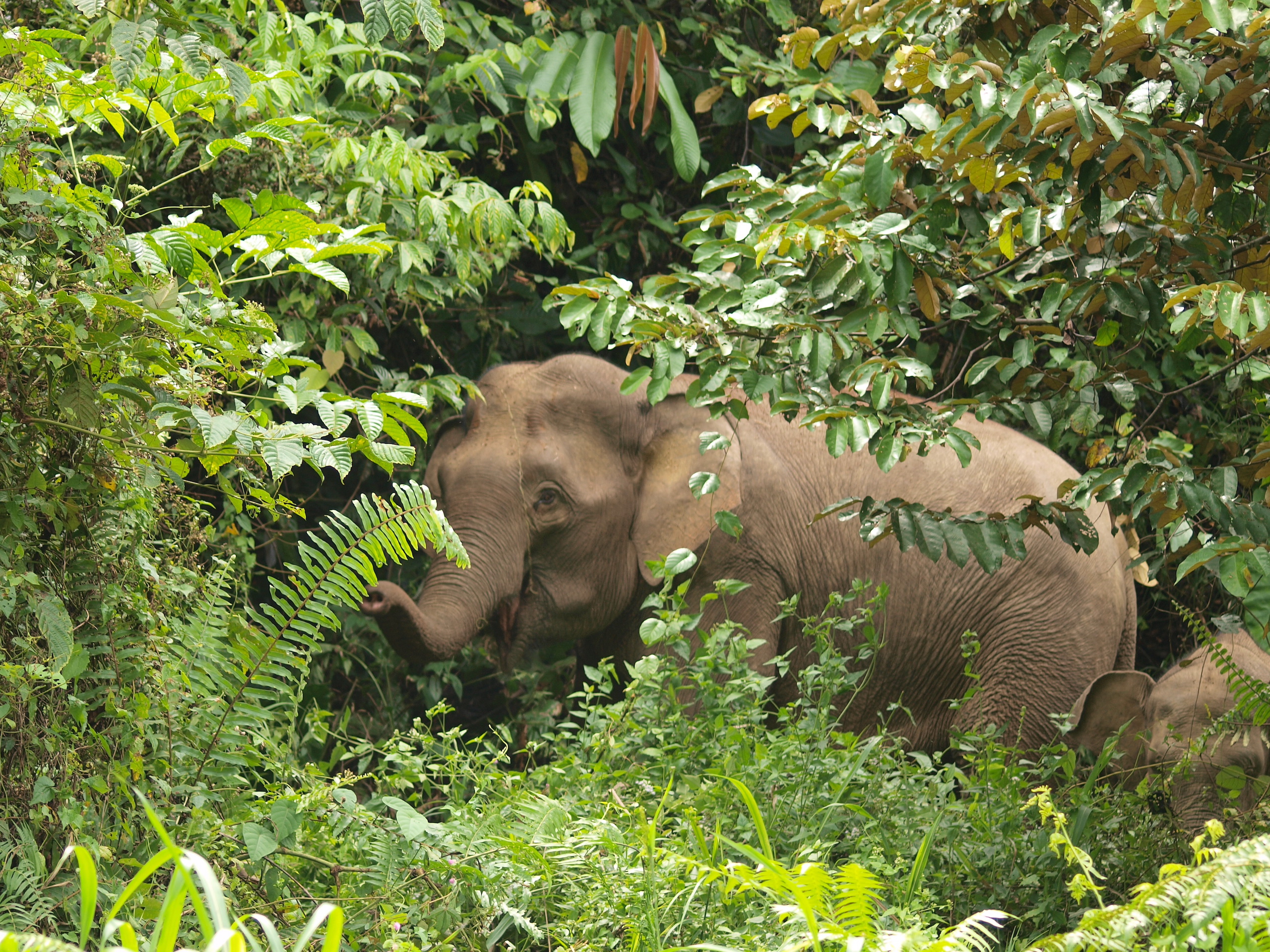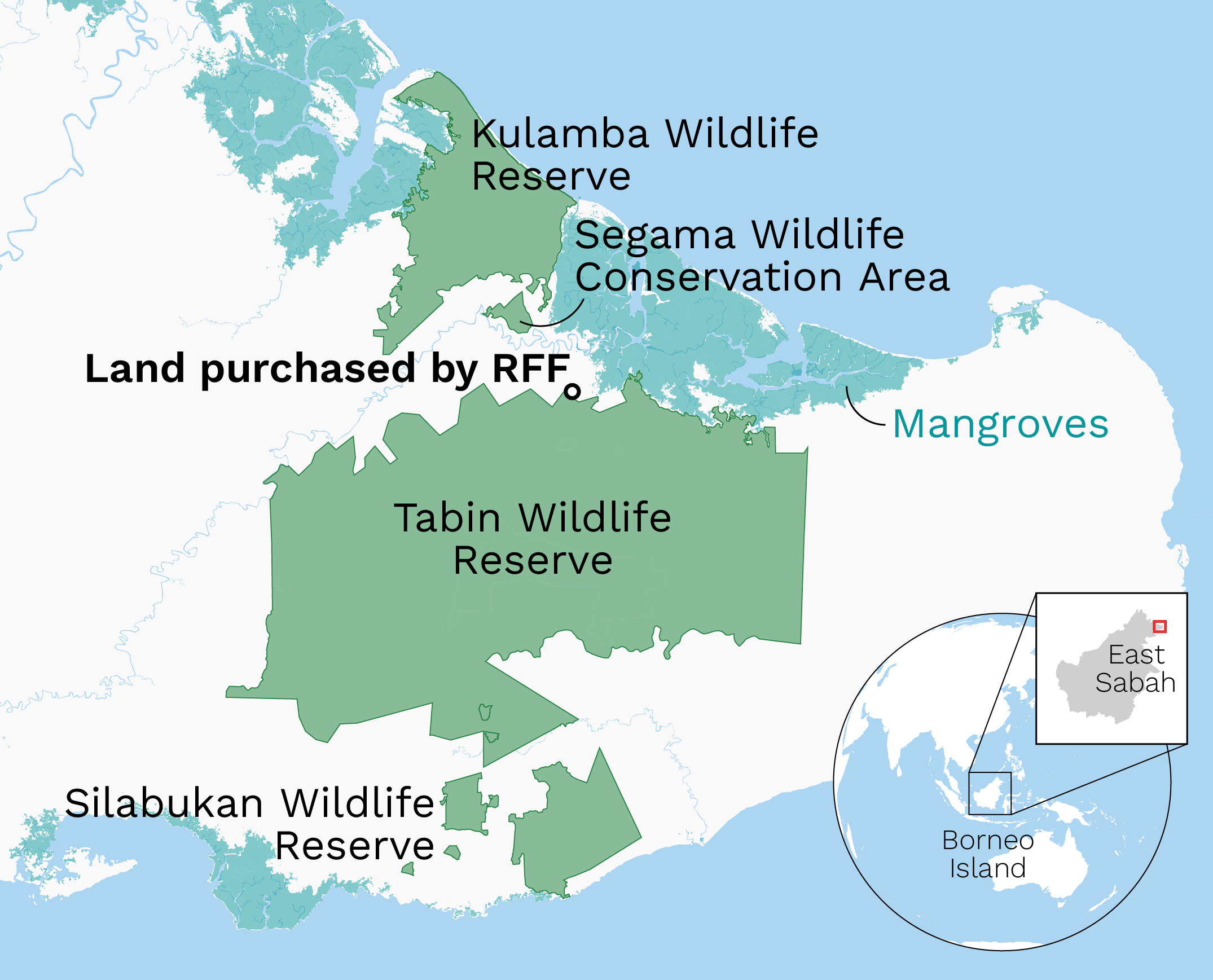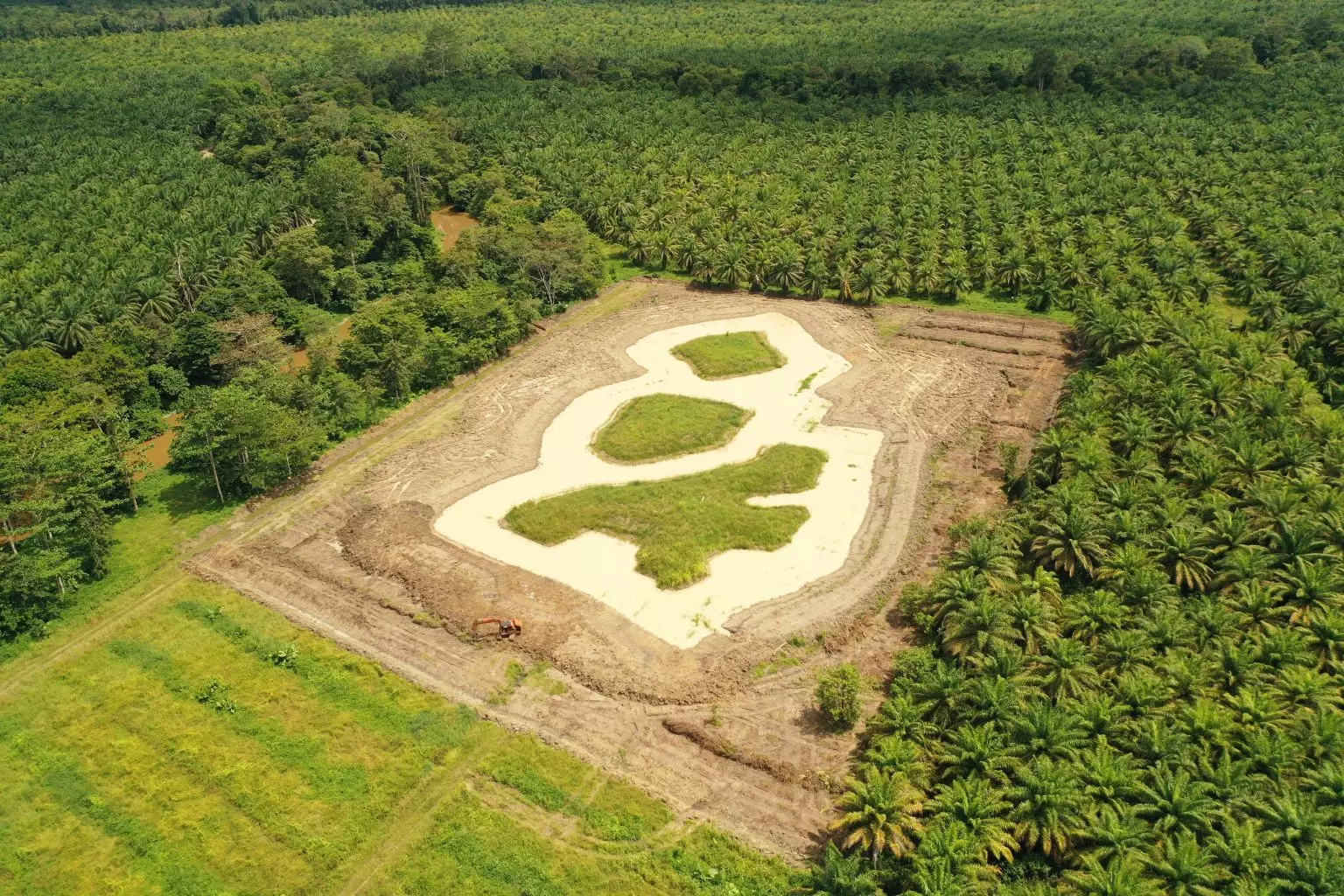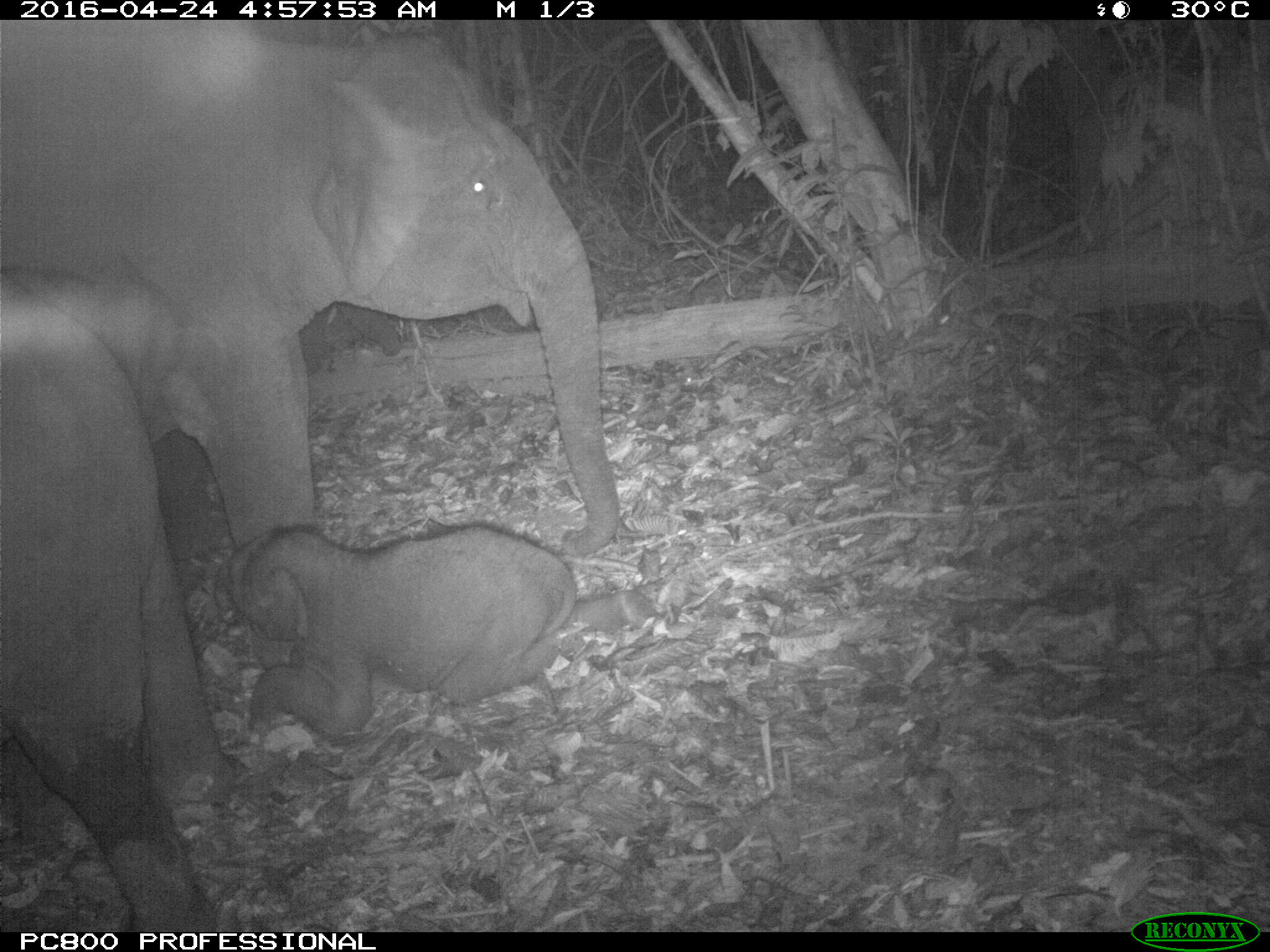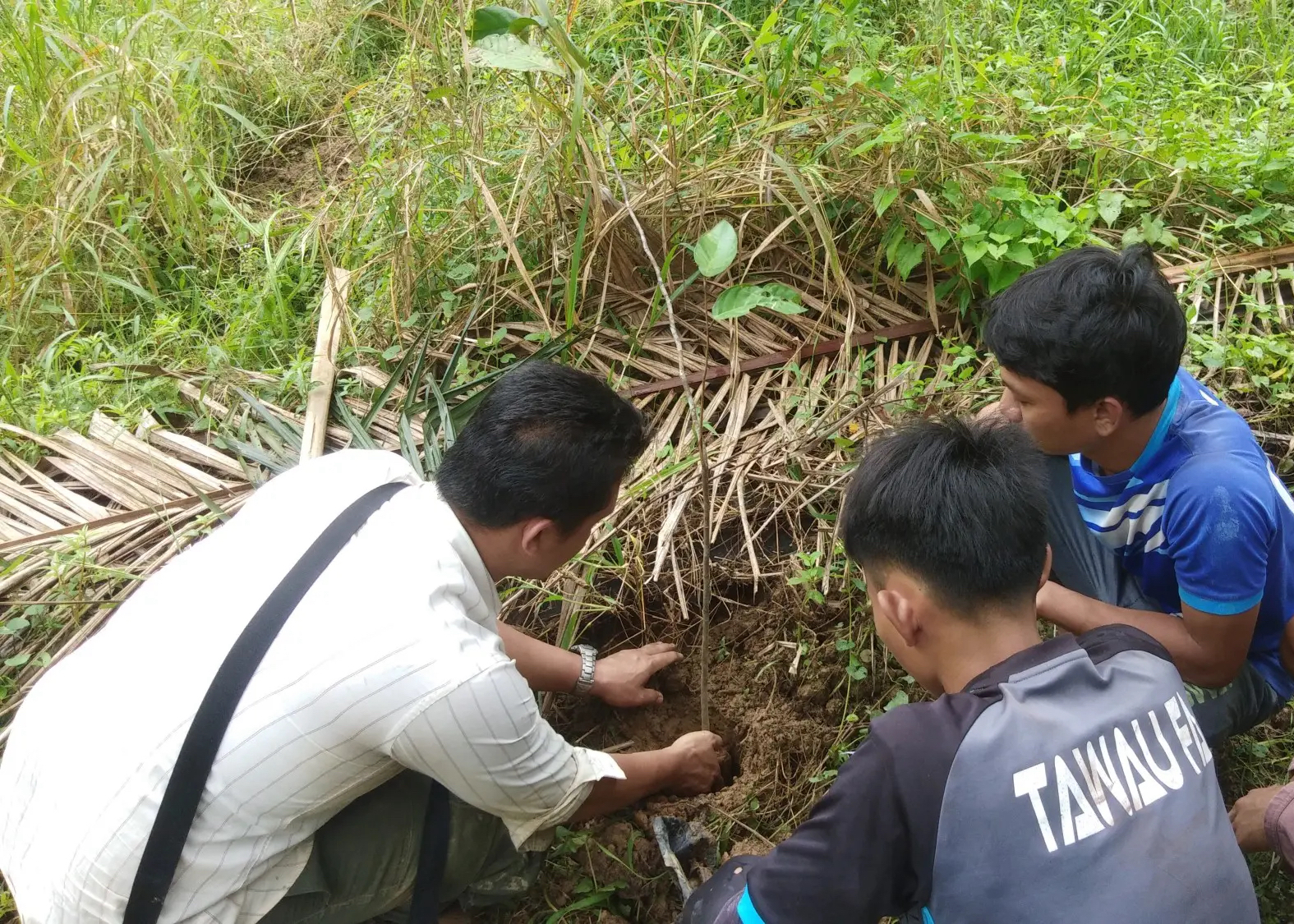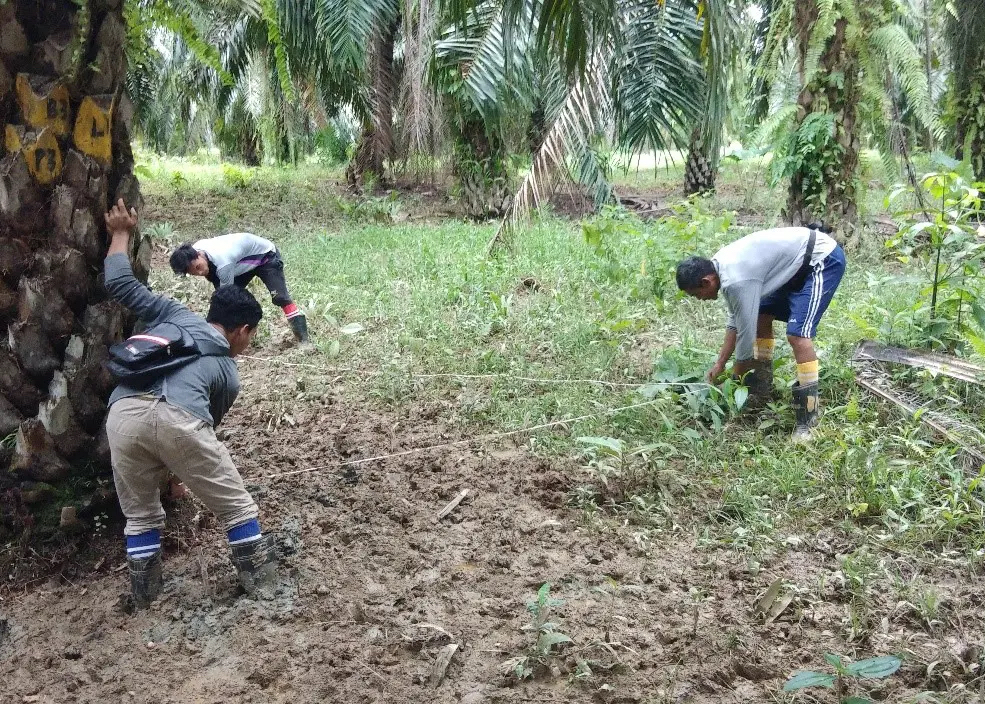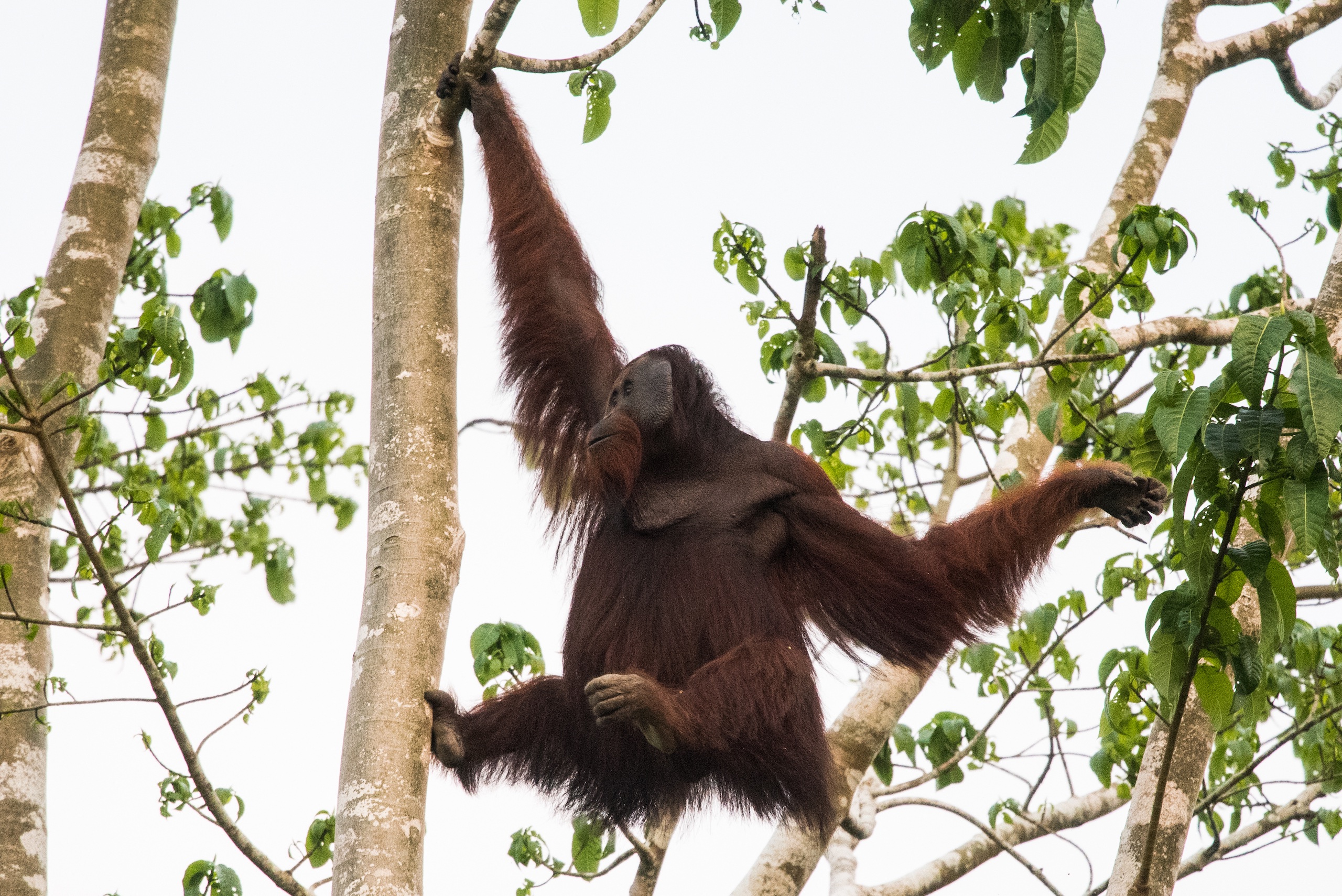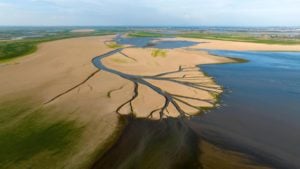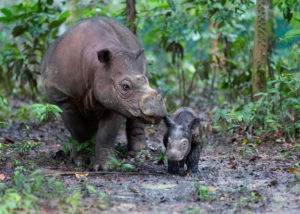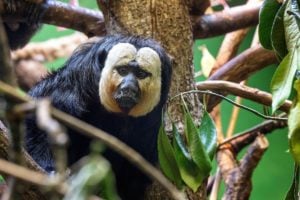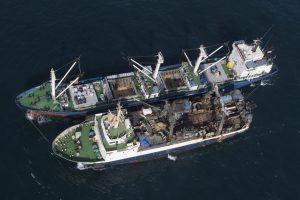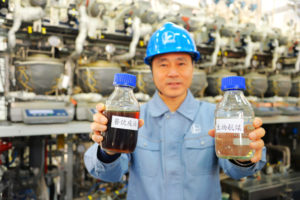East Sabah, in Malaysian Borneo, is a remote and sparsely populated peninsula, still covered in large areas by protected lowland forest and mangrove swamp. It is home to many endemic and endangered species, but their habitats and migration routes have become increasingly fragmented as oil palm plantations have spread.
Between Malaysia’s largest wildlife reserve, Tabin, and another reserve, Kulamba, “there are huge plantations, so the reserves are disconnected,” explains Annuar Jain, project field manager for conservation NGO the Rhino and Forest Fund (RFF).
Forest connectivity is considered essential for the survival of species such as the Bornean pygmy elephant. About a third of the estimated 1,500 remaining wild individuals reside in east Sabah, along with scattered herds of wild Banteng cattle that number approximately 400 in Borneo, according to RFF. “We have already lost the rhino. We need to connect the fragmented forests for the wildlife to move and survive,” says Jain.
Just over a decade ago, RFF, headquartered in Germany, set out to restore a wildlife corridor between Tabin and Kulamba by lobbying the Sabah Forestry Department to designate and protect approximately 2,300 hectares (ha) of previously unprotected forest land. To complete the corridor, RFF acquired a key 65 ha area that lay between protected forest. This involved buying four parcels of land between 2017-19, the majority of which was still productive oil palm plantation belonging to a local company and a smallholder.
This was a pioneering step for a small organisation. “As far as I know, we are the only NGO to be purchasing and restoring former oil palm plantations. It’s expensive, but if you want to prevent the collapse of biodiversity, you have to do this,” says RFF executive director, Robert Risch.
The land is not purchased directly, as only native Malaysians can own such land titles. “It was a new procedure that meant making an agreement to compensate the landowner, with Sabah Forestry Department acting as the trustee and the land being donated to the state government,” he explains. In total, the NGO has spent 885,000 euros (US$950,000) to buy the 65 ha, financed mainly by its partners Zoo Leipzig and Borneo Orangutan Survival Germany, along with private charitable donations. This land is now officially gazetted as Tabin Wildlife Reserve extensions and designated as totally protected area (TPA). Without this intervention, it would have remained degraded and fragmented by the damaging effects of oil palm conversion.
Restoration of the first pilot site began in February 2020 and a recognisable forest is beginning to form. “Even after five years it doesn’t look like an old oil palm plantation anymore. After 10 years you will have a lot of tall trees, closed canopy, recovered soil and a real forest link,” says Risch.
With the aim of reconnecting more crucial areas of biodiversity in east Sabah, RFF is now collaborating with the Sabah Forestry Department (SFD) on efforts to reclaim and restore state land encroached for oil palm. Key representatives in this partnership include Dr Robert Ong, SFD deputy chief conservator of forests and head of the Forest Research Centre in Sepilok, SFD head Datuk Frederik Kugan and Datuk Sam Mannan, who was chief conservator at the start of RFF’s project. Sabah Wildlife Department is also a supportive partner, adds Risch.
Restoration expansion
RFF has recently also begun working in the Silabukan forest reserve, south of Tabin.
“We identified Silabukan as a key area, it’s more than 10,000 ha of species-rich forest close to Tabin, and it’s possible to connect Silabukan to Tabin,” says Risch.
So far, RFF has replanted 63 ha of an illegal oil palm plantation and identified another potential 400 ha to restore. Much of the protected state land can be restored without going through the costly process of acquiring oil palm land, as expansion in these protected areas is illegal.
In Silabukan, RFF is working closely with the forestry department to alert the authorities to oil palm encroachment. For example, in August 2021, RFF’s staff spotted new oil palms inside Silabukan’s protected area. “We reported it to the forestry department and the next day they came to destroy the freshly planted trees,” says Risch. “A few weeks later the area was under restoration, and we planted native trees there.”
“We could stop these activities because of our presence,” he adds.
Sabah is the poorest state in Malaysia, with a quarter of the population living below the poverty line. The forestry department is understaffed, so lacks the resources and capacity to patrol and enforce forestry regulations in the vast area. RFF, which is not locally registered, is providing a structural solution by funding a team of five local staff who work under the forestry department within the Forest Research Centre in Sepilok. “But they only work for our common projects with the forestry department,” explains Risch.
In this alliance, forestry department representatives are involved in RFF’s negotiations with oil palm companies to gazette land. “This facilitates a lot. We also need them to make sure these areas that we buy will be gazetted as totally protected areas,” he adds.
Project field manager Annuar Jain tells China Dialogue: “We have the advantage that because I also represent the forestry department it’s government-to-government, so it’s easier for us to talk to each other and make an agreement.”
Conservation NGOs such as RFF and WWF are able to work in Sabah because there is a particular openness and political will to cooperate, believes Risch. “This is quite significant in Sabah, compared to Indonesia or even other states in Malaysia. It’s a quite comfortable situation because there are people in the forestry department who really want to conserve biodiversity in the forest and this is quite outstanding,” he says.
Forest goals
Driving this political will is Sabah’s commitment, enshrined in its forestry policy, to extend totally protected areas to 30% or 2.2 million ha by 2025. “The policy to protect a big part of Sabah’s forests is a stable commitment and is exceptional worldwide. Now on a UN level they are promoting 30%, but for Sabah this process started many years ago,” says Risch.
The state is on track to meet its target, says SFD’s Robert Ong.
“Legislated protected areas account for about 26%. Including other non-legislated conservation areas brings the total to 28%. If we include our mangrove forest, we are already at 30%… I’m quite confident we will be able to achieve a protected area network exceeding 30%, perhaps attaining around 34–35%,” he said, adding that the department is proposing a few new protected areas, totalling about 165,000 ha. With much of Sabah’s permanent forest estate now degraded, restoration “is a key activity in forestry in Sabah today,” added Ong.
It’s expensive, but if you want to prevent the collapse of biodiversity, you have to do thisRobert Risch, Rhino and Forest Fund
Asked whether this would mean no more deforestation for oil palm, he responded: “Oil palm expansion has virtually stopped. Any planting of oil palm will likely be replanting activities, or conversion of other crops to oil palm. This does not include the clearing of native forests.”
Risch agrees that the main oil palm extending era is over “because there’s not much space left”. However, in Sabah there are still a few hundred thousand hectares of state and private land with forest cover potentially left to be converted. “There’s still active clearing going on here and there but on smaller scales,” he says, adding that he witnessed signs of clearing for oil palm during a field trip in November.
This opportunistic clearing tends to be by individuals or smallholders and is frequently done illegally. “That’s why it’s important to have a project on the ground taking care of an area. Otherwise, they just sneak in and start clearing,” he adds.
Model for growth?
Although RFF’s reforestation projects in east Sabah are small in scale, one of the ambitions for the project is to provide a model for how to convert oil palm back to natural forest.
“We want to motivate and inspire others to do the same. We want to spread the know-how. We have already learnt a lot about what to do and what to avoid. We will regard this project as a blueprint for the future that can be used by other NGOs and oil palm companies going green,” he adds.
One key learning is not to fell oil palm trees initially, but to plant a diverse range of native trees in the shade of the existing canopy while seedlings establish. “From our experience, it’s very hard to bring the forest back when it’s just open area without any shade because there is competing vegetation,” he says.
A good place to start restoration work is within riparian buffer zones, which already belong to the state. In Sabah, there should be a minimum 20-metre buffer zone of forested area on either side of the riverbanks to prevent erosion and pollution, “but all along the rivers, the banks are planted with oil palm wherever possible”, says Risch.
The NGO has identified about 200 km of degraded riverbanks in east Sabah that could be gazetted by law and restored if sufficient funding was available, including parts of the Segama River that connect Tabin with the Heart of Borneo conservation region, he adds.
The importance of riparian buffer zones in preventing biodiversity decline in tropical landscapes dominated by oil palm was highlighted in research published last May.
“Buffer width was the main predictor of species numbers and wildlife abundance,” according to the paper published in the journal Frontiers in Ecology and the Environment.
“The bigger the buffer zone, the better,” says Dr Matthew Struebig, a conservation scientist at the University of Kent’s Durrell Institute of Conservation and Ecology, and one of the study’s contributing authors.
“Our research showed that doubling the buffer zone width from 20 to 40 metres (on both banks) has a disproportionate gain for species, but it can’t protect them all. That’s why you need wider areas in some places,” he says, adding that sunbears and orangutans “do use these riparian areas, not necessarily living in these areas, but they do use them to get from A to B”.
Currently, the policies for wildlife corridors and riparian buffer zones are separate, and the rules on buffer zones “can be quite confusing and open to misinterpretation”, says Struebig, who was part of a consultation last year that included Sabah agencies on riparian buffer zone management.
At the end of the consultation, there was strong motivation to widen the minimum buffer zone required, but also recognition that there is a need for larger wildlife corridors, he says.
This would marry the conservation efforts of practitioners, such as RFF, other NGOs, and oil palm companies, with a formal recognition that there would be a subset of usually larger rivers which would need to have much wider areas set aside for wildlife and in places these would need to be restored.
“Many of the decision-makers we worked with support widening, but they want to see evidence of the importance to wildlife. There needs to be justification to restore for connectivity. It’s trying to bring mostly ad hoc connectivity thinking by NGOs, into accepted area targets and make it more systematic and embedded in the right legislation,” Struebig adds.
This shift could fit well with RFF’s ambitions. “The big plan is to connect all of these lowland areas in east Sabah. If we can do that, we can preserve nearly all the lowland species,” says Risch.
